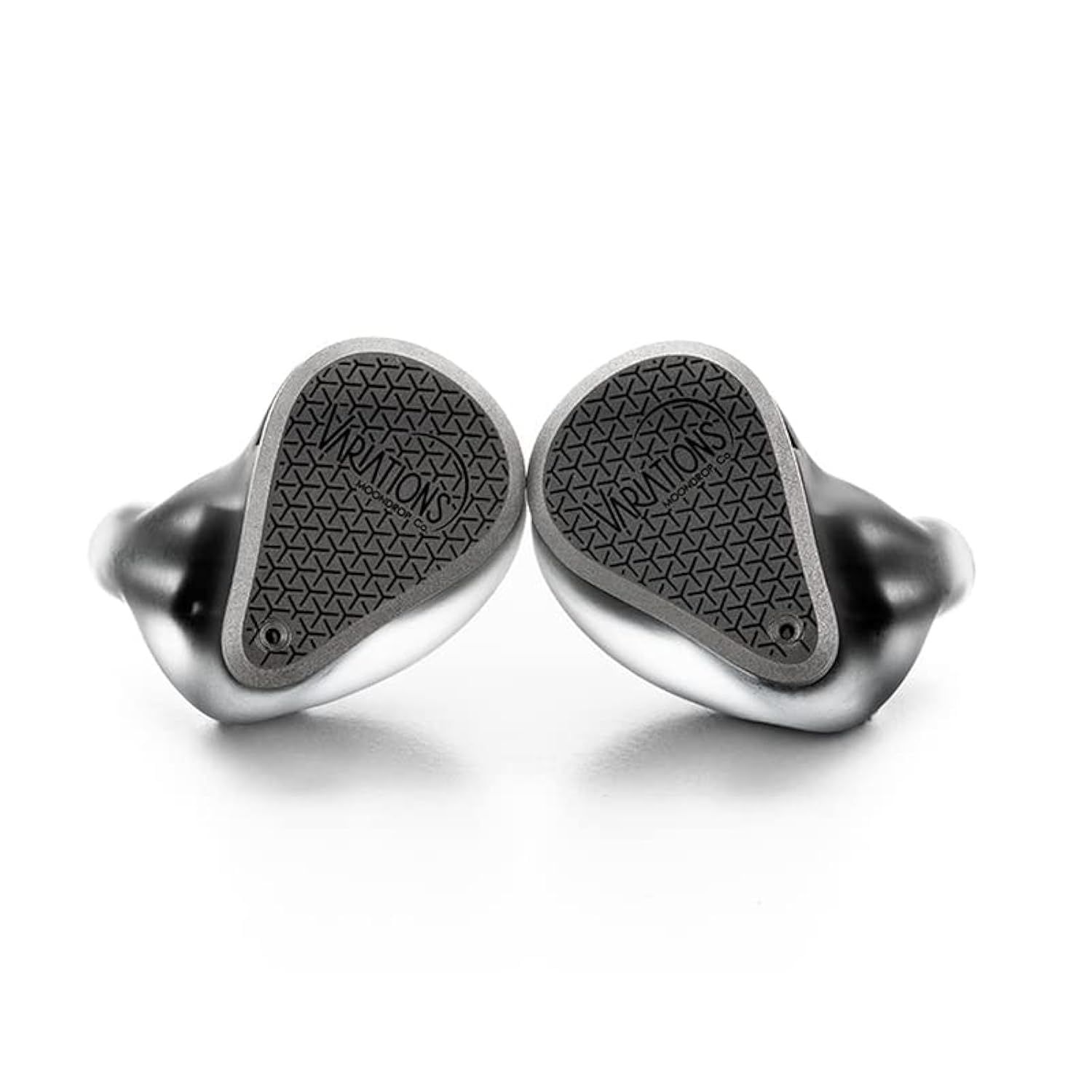Tea Provs.Variations
Sound & Specs Comparison
Information
Both IEMs are widely regarded in the audiophile community. See how they differ in terms of sub-bass response, upper mids, clarity, and overall tonality. Spider charts and rating breakdowns included.
Objective Comparison
Facts, details, stuff.
| General Info | Tea Pro | Variations |
|---|---|---|
| Brand | XENNS Mangird | Moondrop |
| Country | – | China |
| IEM Description | – | Moondrop Variations is a hybrid in-ear monitor combining electrostatic, balanced armature, and dynamic drivers for a precise and immersive listening experience. Known for its balanced, reference-style tuning with tight bass, clean mids, and extended treble, it’s a favorite among audiophiles who crave clarity and technical performance. Ideal for detail lovers and those seeking a high-fidelity sound signature. |
| Price Level | 100 – 500 | 500 – 1.000 |
| Housing & Driver | ||
|---|---|---|
| Driver Config | – | Tribrid |
| Driver Types | – | Dynamic Driver + Balanced Armature + Electrostatic |
| Shell Material | – | Copper |
| Cable | – | – |
| Technical | ||
|---|---|---|
| Freq Range | – | 9-40,000 Hz |
| Impedance (Ω) | – | – |
| Sensitivity (dB) | – | – |
| Crossover | – | – |
| Platform Info | ||
|---|---|---|
| Comments | 0 | 1 |
| Visit Count | 65 | 69 |
| External Reviews | 0 | 3 |
Meta Ratings
Especially for complex musical passages, Tea Pro handles layering and imaging faintly more confidently and precisely. For comfort fit, Variations performs subtly better (7 vs 6.5). Users may find the Tea Pro cable clearly more confidence-inspiring for both daily use and long-term durability.
| Tea Pro | Variations | |
|---|---|---|
| Sound | 7.0 | 6.5 |
| Comfort Fit | 6.5 | 7.0 |
| Build Quality | 6.5 | 6.5 |
| Stock Cable | 6.5 | 5.5 |
| Accessories | 6.0 | 6.0 |
Sound Characteristics
Variations produces sub-bass that is a more textured and present in cinematic or bass-heavy tracks (6.5 vs 6). Tea Pro enhances basslines with b more energy and grip, giving them a livelier feel compared to Variations (7 vs 6.5). Variations translates bass vibrations into a m more visceral experience, while Tea Pro lacks this tactile feedback (8.5 vs 7). It achieves a better warmth and coherence in the lower mids, bringing more realism to guitars and cellos (7.5 vs 6.5). It strikes a d better balance between presence and smoothness in the upper mids compared to Tea Pro (8 vs 6). It offers a greater shimmer and nuance in the lower treble, revealing micro-details that Tea Pro misses (7.5 vs 7). It paints a a broader sonic landscape, offering better instrument positioning across the stage (7.5 vs 7). It retrieves micro-details c more effectively, revealing nuances that are less apparent in Tea Pro (8 vs 7). It avoids frequency masking a more successfully, preserving clarity across the spectrum better than Tea Pro (7 vs 6.5). Notes played through It feel n weightier and fuller, giving a more satisfying impact than those from Tea Pro (8 vs 7). Percussion and quick attacks feel m more physical and punchy on It, adding excitement over Tea Pro (8.5 vs 7). It controls harsh sibilant peaks c more effectively, making vocals smoother than on Tea Pro (9 vs 6). It presents instrument timbre with a more natural coloration, giving a realistic tone that Tea Pro lacks (7.5 vs 7). Tonality on It is b more coherent and refined, yielding a more pleasing overall signature than Tea Pro (7 vs 6.5). It portrays textures in vocals and strings with d more realism, enhancing emotional depth over Tea Pro (7.5 vs 6).
| Tea Pro | Variations | |
|---|---|---|
| Sub Bass | 6.0 | 6.5 |
| Bass | 7.0 | 6.5 |
| Bass Feel | 7.0 | 8.5 |
| Lower Mids | 6.5 | 7.5 |
| Upper Mids | 6.0 | 8.0 |
| Lower Treble | 7.0 | 7.5 |
| Upper Treble | 8.0 | 8.0 |
| Sound Stage Width | 7.0 | 7.5 |
| Detail | 7.0 | 8.0 |
| Layering | 7.0 | 7.0 |
| Masking | 6.5 | 7.0 |
| Note Weight | 7.0 | 8.0 |
| Slam | 7.0 | 8.5 |
| Sibilance | 6.0 | 9.0 |
| Timbre Color | 7.0 | 7.5 |
| Tonality | 6.5 | 7.0 |
| Texture | 6.0 | 7.5 |
Tonal Signature
// Nothing to compare yet.

